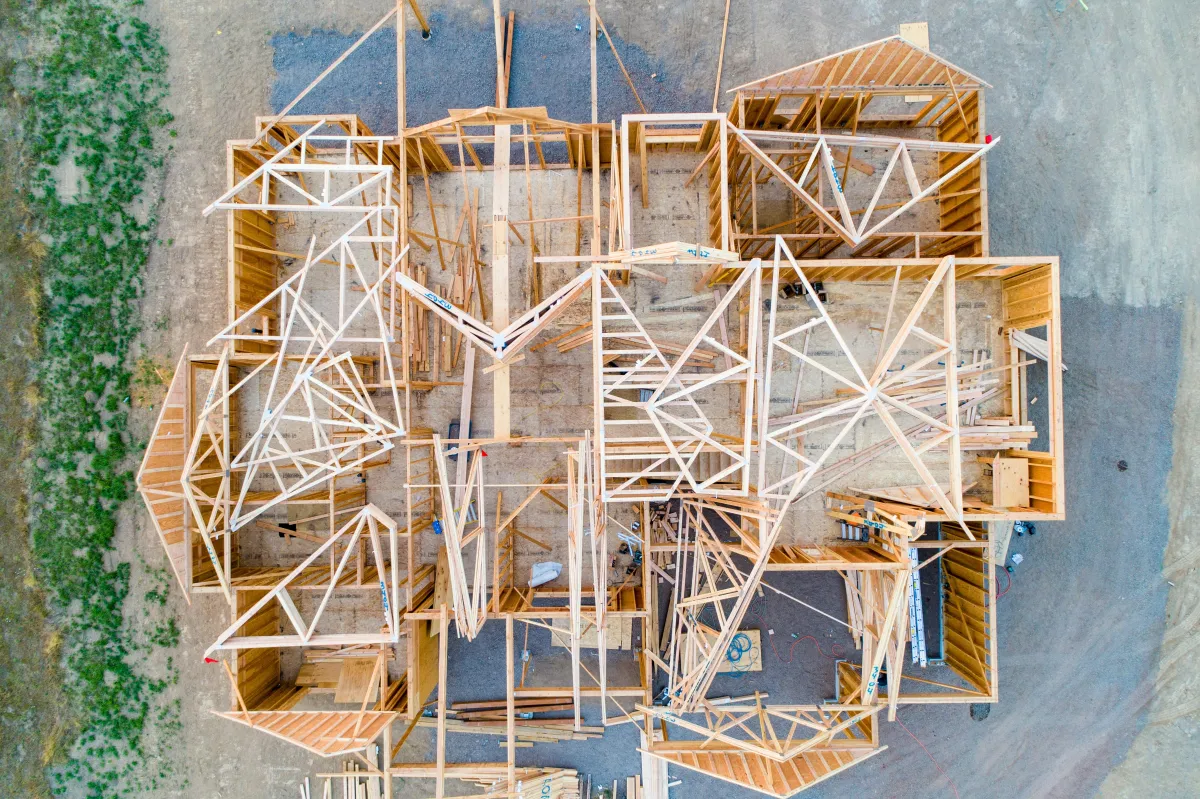
Custom House Designs That Maximize Comfort, Flow & Function
Custom house plan designs provide homeowners with the flexibility to create living spaces that reflect their lifestyle, preferences, and long-term goals. Unlike generic blueprints, these tailored designs focus on optimizing layout, flow, and functionality while incorporating sustainable materials and energy-efficient features. They address common limitations found in pre-designed plans by offering solutions that adapt to specific site conditions and personal needs. From integrating smart home technology to maximizing natural light, custom plans prioritize comfort, efficiency, and aesthetic appeal. This blog explores how thoughtful design choices can transform a vision into a truly personalized home.
Key Takeaways
Custom house plan designs allow homeowners to tailor every aspect of their living space to meet both aesthetic and functional needs.
Eco-friendly materials and sustainable design features help reduce long-term costs and boost energy efficiency.
Modern technology, including 3D renderings, provides realistic previews that ensure client satisfaction.
Expert architects personalize designs while addressing regional building codes and climatic factors.
A collaborative process between clients and professionals leads to transformative living environments.
What Are Custom House Plan Designs and How Do They Transform Living Spaces?

Custom house plan designs are tailored blueprints that meet the unique requirements and lifestyles of homeowners. They emphasize personalized layouts, functional flow patterns, and both interior and exterior customization. By carefully planning room placement and integrating outdoor spaces, these designs can feature open floor plans, natural light optimization, and seamless indoor-outdoor transitions. Custom house designs offers the flexibility to be adapted for growing families or aging-in-place needs. These plans bring a unique level of intentionality to each square foot of the home.
How Do Personalized Blueprints Improve Daily Living?
Personalized blueprints reflect the individual habits and needs of a household, ensuring smoother movement and greater convenience. Kitchens can be located close to the garage for easier grocery unloading, while bedrooms may be grouped for better supervision of children. The design might include private entrances for in-law suites or hobby spaces tucked away from high-traffic zones. Every choice is intentional, promoting flow and comfort. This practical approach to planning creates a home that truly works for the people living in it.
What Role Does Layout Play in Space Transformation?
Layouts dictate how efficiently a home functions on a daily basis. An open-concept design connects living, dining, and kitchen spaces to improve communication and social interaction. Hallways can be minimized, and visual clutter reduced, resulting in a more breathable space. Strategic zoning separates noisy and quiet areas for better ambiance. Natural light paths are also taken into account, enhancing mood and reducing energy use. With a thoughtful layout, even smaller homes can feel spacious and comfortable.
How Do Outdoor Areas Influence Custom Designs?
Outdoor spaces are integral to a custom plan’s success. Patios, decks, and gardens become seamless extensions of indoor living zones, expanding usable square footage. Large sliding doors or glass walls help create visual and physical flow. Custom landscaping supports the architecture by complementing the home’s scale and shape. Shade structures and outdoor kitchens provide all-season functionality. These spaces offer relaxation and entertainment opportunities while enhancing curb appeal and home value.
What Defines a Custom House Plan Design?

A custom house plan design is rooted in the specific needs and vision of the homeowner. Unlike pre-designed plans, it allows for complete control over layout, aesthetics, and functionality. These designs consider lifestyle routines, future growth, and how every room connects to one another. They also adapt to site-specific factors like terrain, sun exposure, and lot size. This ensures a final product that is cohesive, efficient, and tailored to real-world living needs.
How Do Design Preferences Shape Floor Plans?
Homeowners choose layout elements based on their routines and values. For example, some prioritize a central kitchen to act as the heart of the home, while others might opt for private office space away from common areas. Room sizes and locations are adapted for comfort and practicality. Families with children may want nearby bedrooms and open play areas. This flexibility ensures that form always follows function and nothing feels out of place or underused.
Why Are Material Selections Considered Early?
Early material choices influence everything from structure to aesthetics. Clients might favor natural materials like wood and stone for warmth or go with sleek concrete and steel for a modern feel. These decisions also affect cost, durability, and environmental impact. Designers evaluate what works best for the region’s climate and the home’s overall vision. By selecting materials upfront, teams avoid delays and create synergy between architectural elements and finishes.
How Is Local Climate Considered in Design?
Designs adapt to climate by accounting for sun paths, rainfall, wind direction, and seasonal changes. For warm climates, plans may include shaded outdoor spaces and overhangs to block excess heat. In colder areas, window placement maximizes warmth from natural sunlight. Ventilation strategies also vary, improving indoor air quality and energy efficiency. These adjustments ensure comfort year-round and reduce reliance on mechanical systems for heating or cooling.
How Do Custom Designs Enhance Functionality and Flow?

Custom designs improve the usability of every square foot by aligning layout with lifestyle. They prioritize how people move through spaces and how different rooms interact. Circulation paths are optimized to reduce dead zones and promote accessibility. Designers pay close attention to how natural light, privacy needs, and acoustics influence room placement. The result is a home that feels intuitive, cohesive, and easy to live in.
How Do Open Layouts Support Daily Life?
Open layouts promote connection between frequently used spaces like kitchens, dining rooms, and living areas. This setup is ideal for entertaining or multitasking. It removes unnecessary walls, allowing light and air to circulate freely. These layouts often include large windows and sightlines to outdoor areas. With fewer barriers, families can move comfortably and keep communication flowing without sacrificing functionality.
What Role Does Zoning Play in Flow?
Zoning defines areas by purpose—grouping bedrooms separately from entertaining spaces or placing work areas in quiet zones. It helps households maintain order and privacy while still encouraging interaction where needed. For example, a mudroom might buffer the entryway from the main interior, reducing mess and noise. Functional zoning also includes vertical elements like staircases that naturally separate public and private zones in multi-level homes.
How Do Transitions Improve Usability?
Well-planned transitions ensure smooth movement between spaces. They may include features like pocket doors, transitional lighting, or flooring shifts to guide flow and define spaces without full separation. For example, a wide hallway can double as gallery space, making movement aesthetically pleasing and purposeful. These subtle changes help reduce confusion, ease navigation, and elevate the daily experience of the home.
Why Is Personalization Key in Custom House Plans?

Personalization ensures a home reflects the unique lifestyle, habits, and vision of its occupants. It transforms a structure into a space that supports day-to-day activities, cultural preferences, and long-term goals. This approach starts with understanding how the household functions and evolves into a design that meets those expectations. The goal is to align aesthetic choices with functional needs, ensuring the home grows with its residents.
How Does Lifestyle Shape Layout Decisions?
Lifestyle determines which areas should be prioritized or enhanced. A family that entertains often might prefer a large open kitchen and patio access, while someone who works from home may need a quiet office near natural light. Personalization also influences bedroom placement, storage options, and utility spaces. Understanding these routines leads to layouts that support comfort, productivity, and relaxation without wasted square footage.
What Custom Features Add Value to Daily Life?
Custom features bring meaning and convenience to a home. Built-in shelving, window seating, multi-use islands, or a walk-in pantry can transform how space is used. These additions are not just aesthetic—they enhance organization, movement, and daily rhythm. Personalized features might also include energy-saving systems or pet-friendly zones. Each design decision adds long-term value by serving a specific household need.
How Does Personalization Affect Exterior Design?
Exterior elements like porch style, roofing, and landscaping can all reflect a homeowner’s identity. These choices impact curb appeal and neighborhood harmony while ensuring practicality for the climate and site. Personalization might involve choosing locally sourced materials or tailoring overhangs and awnings for sun control. These thoughtful adjustments support both function and visual cohesion with the surrounding environment.
What Are the Most Popular Architectural Styles for Custom House Plans?

Custom house plans include a wide range of architectural styles tailored to homeowners’ preferences. Whether minimal and modern or detailed and traditional, each style can be adapted to reflect personal taste and functionality. Designers often blend stylistic elements to create distinctive homes that feel both familiar and fresh. The goal is to strike a balance between aesthetic vision and livable, efficient design.
How Do Modern and Contemporary Styles Maximize Space?
Modern and contemporary plans emphasize openness, clean lines, and natural light. Large windows and sliding glass doors reduce visual boundaries, making rooms feel larger and more connected. Space-saving features like built-in storage and multi-functional furniture help maximize usability. Smart home integration further improves efficiency, offering streamlined control over lighting, climate, and security. These styles prioritize simplicity while enhancing comfort and flow.
What Are the Features of Traditional Custom House Plans?
Traditional designs rely on symmetry, classic materials, and structured layouts that separate public and private areas. Elements such as pitched roofs, porches, and detailed trim work give these homes a timeless look. Natural wood, stone, and brick add warmth and texture. Traditional plans also often include formal dining and sitting rooms, supporting both casual and ceremonial functions. These designs create homes that feel rooted and enduring.
How Can Styles Be Blended to Create Unique Spaces?
Blending styles allows for innovative combinations of old and new. A home might feature a contemporary open layout alongside vintage lighting or handcrafted wood accents. Color palettes and textures are chosen to harmonize contrasting features. This approach personalizes each space, making it both practical and visually engaging. Style fusion encourages creativity while ensuring that the design meets both functional and emotional needs.
What Should Clients Expect During the Custom House Plan Design Process?

Clients can expect a structured and collaborative journey tailored to their vision and lifestyle. The process starts with consultations and evolves through conceptual planning and detailed design stages. Each phase includes client feedback and revisions, supported by realistic 3D renderings. Open communication ensures alignment between design goals and execution. The result is a highly personalized and well-coordinated plan.
How Are Initial Consultations Structured for Personalized Plans?
Initial consultations begin with a deep dive into the client’s preferences, routines, and future needs. Designers gather insights about desired layouts, architectural styles, and functional priorities. Preliminary sketches are created to explore spatial ideas and identify opportunities. The consultation also reviews site conditions, zoning regulations, and climate considerations. These discussions set a solid foundation for the custom design journey.
What Steps Are Involved in Conceptual and Detailed Design?
The conceptual phase focuses on defining space flow and layout relationships. Architects map out zones like living areas, bedrooms, and workspaces while considering daily use. Once approved, the process moves into detailed design where dimensions, finishes, fixtures, and systems are finalized. Visual tools like 3D renderings support decision-making and ensure the design aligns with the client’s expectations from start to finish.
How Does Project Management Support Construction Success?
Project management bridges the gap between design and construction. Managers oversee timelines, budgets, and contractor coordination to ensure progress remains on track. They facilitate communication among all parties to swiftly resolve issues and maintain alignment with the original plan. This oversight minimizes delays and ensures the final build reflects the approved custom design with precision and quality.
How Can Custom House Plans Be Adapted for Different Regions and Climates?

Custom house plans are designed with adaptability in mind to suit various environmental and regional needs. Architects consider elements such as weather patterns, humidity levels, and sun orientation to optimize indoor comfort. The use of regional materials enhances thermal performance and reduces transportation emissions. These plans ensure that the home is both resilient and responsive to its surroundings.
How Are Regional Climate Conditions Accounted for?
Architects evaluate local climate data to inform decisions on insulation, ventilation, and sun exposure. In hot regions, designs might include shaded patios, reflective roofing, and cross-ventilation strategies. In colder zones, they prioritize insulation, thermal mass, and south-facing windows. These climate-specific choices enhance energy efficiency and year-round comfort for residents.
Why Does Local Sourcing Matter in Different Areas?
Using locally sourced materials supports regional economies and reduces environmental impact. These materials are often better suited to the area’s weather conditions, improving durability and performance. In addition, they reflect local aesthetic preferences and architectural traditions, grounding the design in its geographic context. This results in homes that are both functional and culturally resonant.
What Structural Elements Help With Environmental Adaptability?
Features like reinforced framing, impact-resistant windows, and moisture barriers improve resilience in areas prone to storms or flooding. Overhangs and adjustable shading devices allow control over solar gain and protection from the elements. Elevated foundations and sloped roofs help manage rainwater, while natural ventilation paths reduce cooling loads. These adaptations ensure the home performs efficiently in diverse climates.
Frequently Asked Questions
What distinguishes a custom house plan design from standard blueprints?
Custom house plan designs go beyond one-size-fits-all solutions by focusing on each homeowner’s lifestyle, site-specific conditions, and long-term goals. Unlike generic blueprints, these plans feature tailored layouts, structural details, and materials that reflect individual needs, ensuring optimal comfort, flow, and functionality. They also address local zoning, building codes, and environmental considerations to create homes that feel uniquely personal and well-integrated with their surroundings.
How do sustainable design practices benefit custom home construction?
Sustainable design practices support long-term efficiency and comfort by minimizing resource consumption and environmental impact. Custom house plans can incorporate eco-conscious features like energy-efficient HVAC systems, recycled building materials, and strategic placement for natural lighting and ventilation. These elements reduce utility bills, enhance indoor air quality, and contribute to a healthier living environment—all while promoting responsible construction choices.
What role do 3D renderings play in the design process?
3D renderings offer clients a realistic preview of their future home, allowing them to explore layout, lighting, finishes, and spatial dynamics before construction begins. This visual tool helps eliminate guesswork, reduces costly mid-build changes, and supports more confident decision-making. For those working with design professionals, renderings also foster stronger collaboration and alignment between concept and execution.
How does personalization enhance the functionality of a home?
Personalization ensures that every room and feature is aligned with how the homeowner lives, works, and relaxes. This includes incorporating tailored storage solutions, adaptable room layouts, and custom finishes that reflect both taste and utility. For example, Custom Builder Connection works with clients to create floor plans that support daily routines, family size, and future lifestyle shifts—making the space more intuitive and efficient for years to come.
Conclusion
Custom house plan designs offer a transformative solution for homeowners by creating spaces that are both functional and reflective of unique lifestyles. By blending personalized consultation, sustainable materials, and advanced visualization technologies, these designs meet modern living demands while being adaptable to local conditions. Expert architects play a crucial role in ensuring that every detail is optimized—from the initial blueprint to the final build—resulting in homes that stand out for their beauty, practicality, and energy efficiency.


